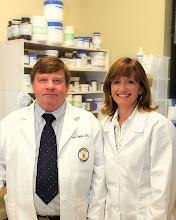Dry skin and wrinkles go hand-in-hand. Hyaluronic Acid which is naturally produced in the body is a wonderful ingredient for replenishing moisture in the skin. It is found in high concentration in the soft connective tissue and in the fluid surrounding the eye. It is also present in cartilage, joint fluids, and in skin tissue. Hyaluronic Acid forms a film on the skin which holds moisture keeping the surface of the skin supple and moist. Hydrated skin is more plump leading to fewer noticeable wrinkles. Hyaluronic Acid has a high molecular weight; therefore, it cannot be absorbed into the skin but traps moisture on the surface of the skin. It can hold 1000 times its weight in water.
Hyaluronic Acid can also be injected by a trained professional and will plump and smooth wrinkles in just one treatment. Some commercial names for these fillers are Juvederm, Perlane, and Resylane. The injectable treatment works very well, but maintenance is required about every 6 to 12 months. Side effects include swelling, bruising, discoloration, and pain at the injection site but these side effects subside after a few days. Since Hyaluronic Acid occurs naturally in the body, there is little chance that it would cause an allergic reaction or a rejection to the filler. ABC News reported a village in Japan whose residents consumed a diet rich in hyaluronic acid indicating a possible link to hyaluronic acid and longevity.
Hyaluronic Acid may not be the "fountain of youth" but it is a wonderful ingredient in the fight against wrinkles and aging skin. Moisturizers containing hyaluronic acid certainly merit their place as a main stay in anti-aging skincare products.
Friday, November 13, 2009
Subscribe to:
Post Comments (Atom)


No comments:
Post a Comment